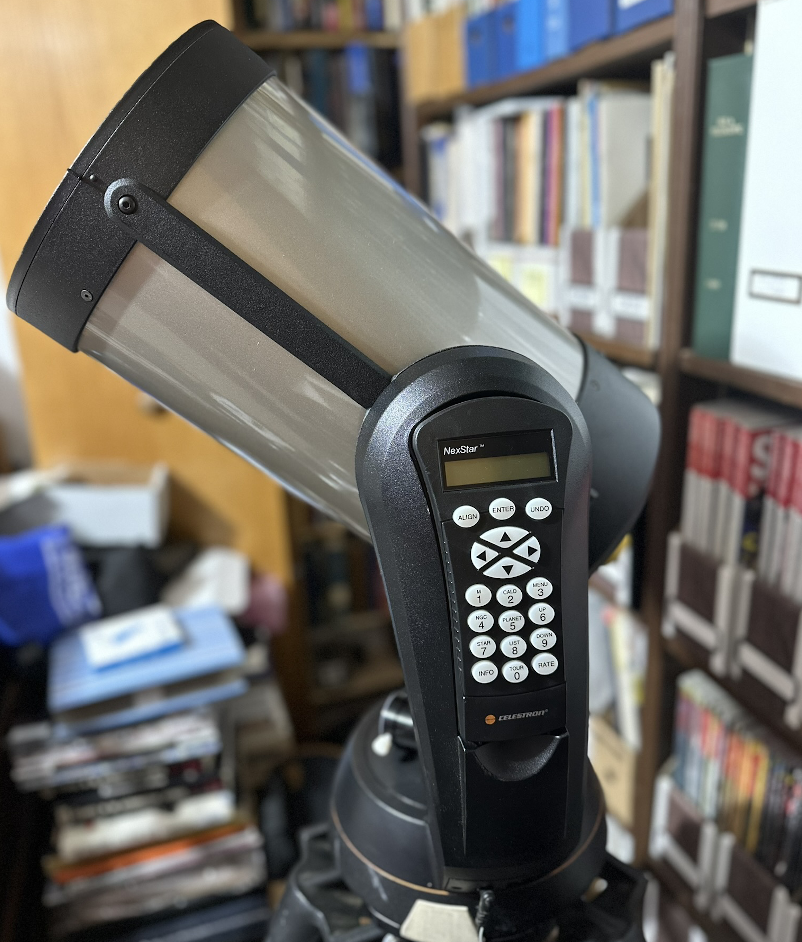
Celestron Telescope Information Page

The Celestron NexStar 8 telescope is a computerized "GoTo" 'scope that, once aligned, will automatically take you to any of the over 18,000 objects in its database. The large 8 inch aperture provides wonderful views of stars, double stars, nebulas, planetary nebulas and galaxies.
The alignment procedure requires the user to precisely center two stars in the eyepiece. While not strictly required, it really does help if you can visually identify a few bright stars. For example, in the summer the stars Arcturus, Vega, Deneb, Spica, Polaris and Dubhe are good alignment stars. If you can identify these stars, you should have no trouble aligning the telescope. You will need to manually enter your location, date and time into the hand controller. You must also align the red-dot finder to the telescope. This can be done during daylight using a distant object (e.g. a telephone pole or radio tower). The red-dot finder helps you to get the chosen star in the eyepiece so that you can accurately center it.
This is a "go to" telescope. Using the hand controller, you can tell the telescope to "go to" any of the thousands of celestial objects in its database. The 'scope will then automatically move itself so that it points at the object you selected. You do not need to know where the object is located in the sky - once aligned, the telescope knows how to find it. Once the object has been found, the telescope will track the object automatically. You can view it for as long as you like. If you need help in choosing objects, the hand controller includes a list of the top sights for that night (it's called Tour Mode).
The NexStar 8 telescope weighs approximately 24 pounds. The sturdy tripod weighs approximately 10 pounds. The telescope and tripod are separated during transit and must be assembled together before use. While not particularly heavy, care must be taken to attach the telescope to the tripod without dropping the telescope. This is best done while there is still a bit of light.
The telescope requires power to operate. You can use 8 AA batteries (not supplied; you must provide the batteries). You may also use a stable 12V battery such as a deep cycle marine battery with appropriate cables and adaptors (also not supplied).